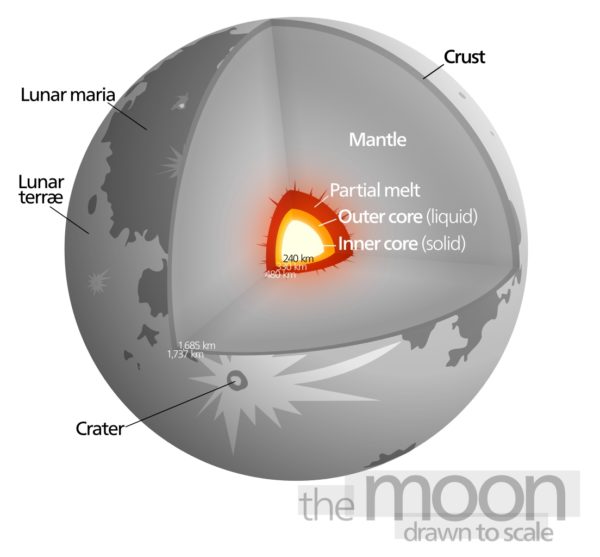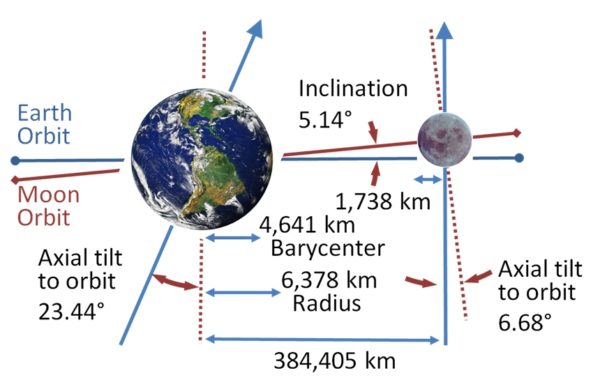"The pressure to compete, the fear somebody else will make the splash first, creates a frenzied environment in which a blizzard of information is presented and serious questions may not be raised." -Carl Bernstein
Why is our Moon so unlike every other moon in the Solar System? No other moon is such a large percent of its parent planet’s mass or size; no other moon rotates so far afield of its planet’s rotational axis; no other moon orbits so far out of the planet-Sun plane. Yet our Moon does it all. The giant impact hypothesis might explain why the Moon is made of the same material as Earth, but wouldn’t explain these features.
 The layers of the Moon, consistent with an origin that is identical to the Earth's interior. Image credit: Wikimedia Commons user Kelvinsong.
The layers of the Moon, consistent with an origin that is identical to the Earth's interior. Image credit: Wikimedia Commons user Kelvinsong.
Unless, that is, the giant impact occurred with a very large velocity out of the plane of proto-Earth’s orbit. Unless, again, the Earth weren’t rotating at 23.5º prior to the impact. This new tweak on the impact hypothesis, put forth by a team of authors earlier this week in the journal Nature, might explain the unique history of the Earth-Moon system, including some features we don’t normally think about as being puzzling.


Could this have an impact on the faint young sun problem: the solar luminosity should have been low enough that even with a lot of greenhouse gases the early earth should have frozen over. But geological evidence including life argue otherwise.
Now if the young (but after impact) earth had a large axial tilt (didn't they suggest >60degrees?) that certainly changes the distribution of sunlight -more at the poles than at the equator, and I wonder if that makes it harder to glaciate. Add in heat dissipation -from among other things the very large tidal forces early on, could that supply enough heat to solve the paradox?
Well, sure. I live here.
A back of envelope look at tidal dissipation:
Total force (actually gradient) scales as one over R**3. The amplitude of any perturbation would be expected to scale as
amplitude squared, so that gives a naive scaling factor of tidal dissipation with distance of one over R**6. Current tidal dissipation of the earth moon system is estimated as roughly 1 terawatt. So at ten times closer we would expect roughly
a million times that or 1e18 watts. The total sunlight intercepting the planet is something like 65.e16. So tidal dissipation on the early earth could be greater than the available sunlight. I wouldn't be surprised if very significant heat was available from this mechanism to keep the early earth warm.
But, high dissipation means the moon will rapidly move outward, perhaps the effect doesn't last long enough to solve the faint young sun paradox?
This might be a bit lame question but here it goes. If Moon has a liquid metal core, similar in composition to Earth, and is rotating, why doesn't it have a dipole magnetic field, like Earth?
"The likelihood that the early Earth was hit with the right properties to explain the current tilt of the moon’s orbit “is something like 30 percent,” Stewart said. “It’s reasonably likely.”"
On fivethirtyeight.com, Trump's current chance of winning: 34.1%